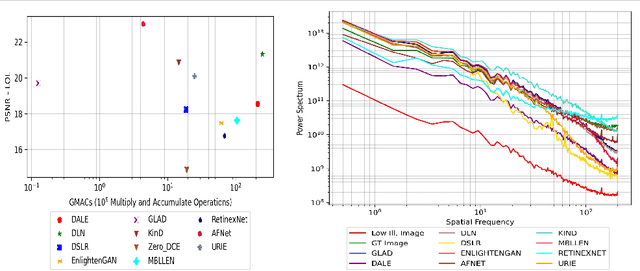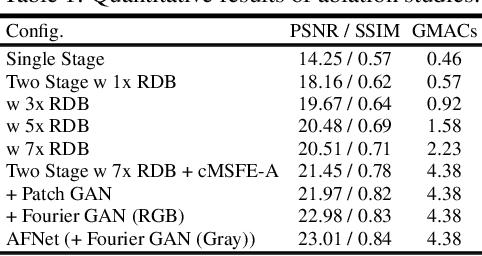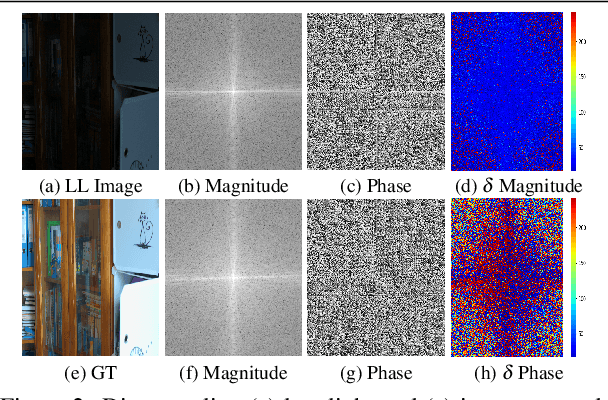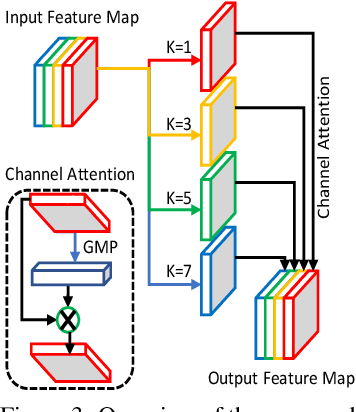Lightweight HDR Camera ISP for Robust Perception in Dynamic Illumination Conditions via Fourier Adversarial Networks
Paper and Code
Apr 04, 2022



The limited dynamic range of commercial compact camera sensors results in an inaccurate representation of scenes with varying illumination conditions, adversely affecting image quality and subsequently limiting the performance of underlying image processing algorithms. Current state-of-the-art (SoTA) convolutional neural networks (CNN) are developed as post-processing techniques to independently recover under-/over-exposed images. However, when applied to images containing real-world degradations such as glare, high-beam, color bleeding with varying noise intensity, these algorithms amplify the degradations, further degrading image quality. We propose a lightweight two-stage image enhancement algorithm sequentially balancing illumination and noise removal using frequency priors for structural guidance to overcome these limitations. Furthermore, to ensure realistic image quality, we leverage the relationship between frequency and spatial domain properties of an image and propose a Fourier spectrum-based adversarial framework (AFNet) for consistent image enhancement under varying illumination conditions. While current formulations of image enhancement are envisioned as post-processing techniques, we examine if such an algorithm could be extended to integrate the functionality of the Image Signal Processing (ISP) pipeline within the camera sensor benefiting from RAW sensor data and lightweight CNN architecture. Based on quantitative and qualitative evaluations, we also examine the practicality and effects of image enhancement techniques on the performance of common perception tasks such as object detection and semantic segmentation in varying illumination conditions.
 Add to Chrome
Add to Chrome Add to Firefox
Add to Firefox Add to Edge
Add to Edge